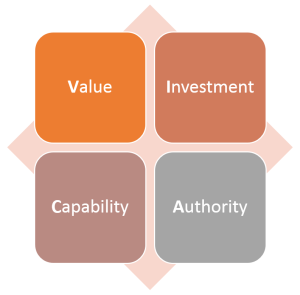Over the last few years, the CW workforce industry has exploded with new technological and operational advancements, leaving CW programs scrambling to stay up to date on the requirements and advancements.
These changes and advancements — such as DE&I, direct sourcing, talent acquisition platforms, AI and automation, and recruit-train-deploy — provide organizations an opportunity to harness the power of a previously untapped and agile contingent workforce. We’re seeing early adopters quickly establishing a competitive advantage within their market spaces and industry verticals, while many others are overwhelmed and wondering where to begin.
Transforming into a next-generation program rarely happens overnight, and the journey will look different for every organization. Often, the change will require a total mindset shift for senior executives who have become comfortable with the status quo. Other programs may find they have optimized their current operations, cost and risk controls, and systems so well that a complete overhaul of the way business is currently conducted will be necessary to achieve any level of transformation or adaptation.
It can be challenging, sifting through the industry hype and internal politics, to determine the best place your program’s next-gen journey should begin. Here are a few tips to help you create a path unique to your program and to determine what will help move your organization from its current state to one of greater performance and value.
Do your homework. Familiarize yourself with the goals, values and challenges of the decision makers and senior executives in your organization. Identify the initiatives that are likely to resonate with them and motivate them. Storyboard which initiatives will result in the most immediate ROI, alleviate a pain point or champion your organization’s values and brand. Then you can align your strategy with the most pressing and strategic changes your organization needs the most. Even if the first step seems small in comparison to other initiatives, it could be the best place to start, enabling you to build trust and momentum with senior leadership. This ultimately will empower you with the required support to drive change.
Vet your initiatives. How feasible and achievable are the initiatives you are proposing? A powerful decision-making tool to help address these questions is the VICA methodology. Use a grading system to rank the empowerment level you possess with each initiative. This can help determine which initiatives have the highest likelihood of success and which are unattainable or likely to fail in your organization. Always consider each of the four major elements in VICA — value, investment, capability and authority — when making core mission-based decisions for your program.
- Does the initiative provide value to the current as-is state of your program based on what you want to achieve?
- Is your organization prepared and willing to invest in this strategic change? And at what level?
- Capability. Are you capable of executing and delivering this change?
- Do you or your leadership have the authority to execute the change and support the required investment?
Expect resistance. Remember, the proposed change may require a mindset shift of senior leaders. This can take time! Don’t get discouraged if you don’t receive buy-in right off the bat or your ideas are challenged. Getting to the “no” doesn’t necessarily mean it’s the end of the road. Try to find out why — there may be an alternative solution, or perhaps the timing is off, or maybe there is a misunderstanding of the ask. This gives you a valuable opportunity to reassess and come better prepared next time.
Leverage your partners. Your supply chain and staffing partners have a wealth of knowledge! Communicate challenges and opportunities that exist within your program with your strategic partners and solicit innovation, ideas and success stories from them. Identify opportunities to participate in pilot programs that align with the goals of your program. Host an innovation meeting by bringing a select group of strategic partners to the table; encourage creative thinking and look for opportunities for co-innovation and collaboration.
Understand your program’s maturity level. Above all, this is not a beauty contest. More bells and whistles, integrations and bolt-ons will not always translate into more value for your organization. While they may be alluring, consider your organization’s values and goals along with your program’s current maturity level. Determine which initiatives align with your priorities and which initiatives could be an over-investment or waste of resources based on your program’s current stage.
At the end of the day, your next-gen path will be unique to your CW program. It’s easy to get swept up in the wave of new contingent workforce innovations only to find yourself in “analysis paralysis” or “extinct by instinct.” Don’t let this stop you from pursuing your CW program’s next-gen journey. With the right preparation, tools, analysis and curiosity, you can create a pathway for your program and take the next step in that direction.
SIA offers a Workforce Solutions Ecosystem Assessment to CWS Council members to evaluate their CW practices and maturity and provide insight into potential areas of advancement opportunity within their CW program. Learn more about CWS Council membership.











